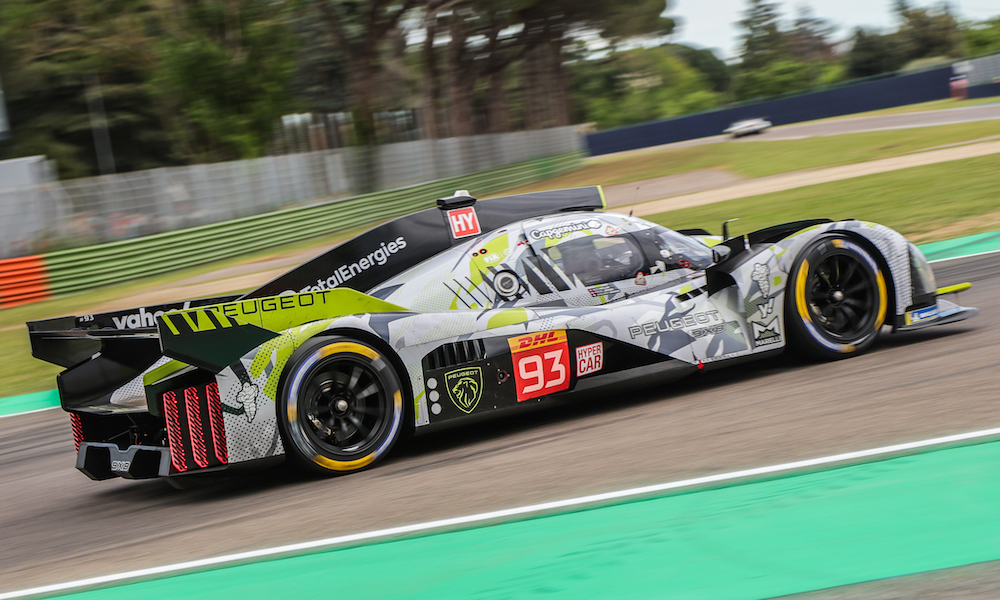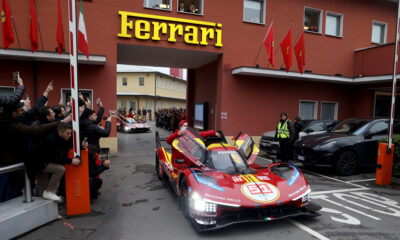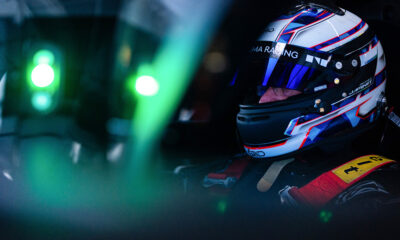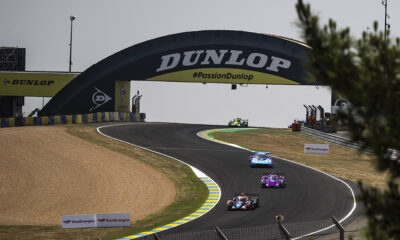
Photo: MPS Agency
Peugeot ‘maximized’ its potential result by claiming a points finish on debut for the updated 9X8 Hypercar at the 6 Hours of Imola, according to technical director Olivier Jansonnie.
The No. 93 Peugeot 9X8, driven by Nico Mueller, Mikkel Jensen and Jean-Eric Vergne, came home in ninth place after six hours of racing while the sister No. 94 machine finished 14th after it was caught up in a multi-car incident on the opening lap.
The result means two world championship points for Mueller, Jensen and Vergne, allowing them to climb to 13th in the drivers’ standings while Peugeot picks up its first manufacturers’ points of the year and moves past Lamborghini and Cadillac to sixth on that points table.
Speaking after the race, Jansonnie indicated that the points finish was the maximum result achievable for the No. 93 crew at Imola.
“In the end, pace-wise, we were probably around 10th or 11th on track,” he said.
“So we tried to maximize. We know it’s a track that was actually difficult to overtake.
“The only real option we had was to try to have a different pit stop strategy, trying to reduce our time in the pit and overtake in the pit, which is what we did.
“On the positive side, I think we were quite happy with the strategy we had with the rain coming and having the rain tires at the right moment
“So we were all quite happy with what we did. I think we just maximized what we could do with the pace of the car today on car No. 93.”
While the No. 94 car endured a difficult race, the sister machine enjoyed an almost trouble-free run except for a moment that saw Mueller slow on track in the first hour.
Jansonnie indicted that the problem was likely the result of an electronics glitch, although he added that further investigations into the root cause of the issue would still need to take place.
“I think we might have lost around 30 seconds, I mean, plus track position and this kind of thing,” he said.
“It’s probably electronics. We need to investigate what actually did happen.
“We needed some kind of reset to try to make it work. And it did work, actually. It just takes a bit of time.”
As for the No. 94 car, Jansonnie explained that the first lap melee left Peugeot scrambling to find ways to prevent further time loss.
He revealed that the French squad opted to call the car into the pits two separate times in the wake of the incident as part of a “quick turnaround” that was aimed at addressing both a puncture and bodywork damage.
“We did it in two times to try to optimize the sporting rules,” he said.
“We tried not to be lapped actually by the leader. We came in twice. It was a decision to do it in two [parts] to stay in the lap a little bit longer, so we did.
“We changed front and rear, both were damaged. We changed a tire in the first stop and the front and rear in the second.”
Although the damage suffered on lap one is understood to be unconnected to the high-speed puncture Loic Duval suffered at Tamburello later in the race, the hit did have further repercussions for Peugeot in the pits.
“The air jacks were damaged from the start, from the hit we had at the start, we think,” Jansonnie said.
The Frenchman indicated that the issue persisted for the remainder of the race. This forced Peugeot to employ inflatable bags to lift the car off the ground, a tactic similar to what Team WRT used en route to its LMP2 class win at the 24 Hours of Le Mans in 2021.
“It was a nightmare pit stop,” Jansonnie reflected. “Obviously, we tried to reduce the number of pit stops as much as we could.
“But then it was only with these kind of inflating balloons we had to lift the cars when the jacks are not working.”

























